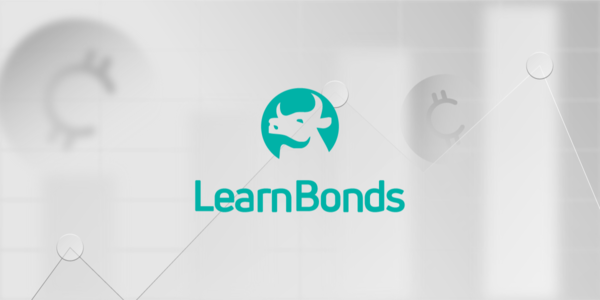Forex Trading Philippines – A Beginner’s Guide
Highly famed for being one of the largest and most liquid markets, the forex market presents plenty of potential for traders. But it is not without its challenges.
Before you begin trading, you need to make sure you understand the market and find a suitable forex broker. That’s where we come in – we’re here to help you kick start your forex trading in the Philippines.
This guide covers everything you need to know about Philippines forex trading. We’ve covered the market basics, reviewed the top forex brokers, and provided a step-by-step guide on how to trade forex in the Philippines today.
-
-
How to Trade Forex in Philippines in 3 Quick Steps
If you are keen to start trading forex immediately, simply follow the three steps below:
Step 1: Pick a Forex Trading Platform in Philippines
One of the most important steps to beginning forex trading in the Philippines is to choose a broker. There’s plenty to pick from, so you need to compare the various platforms and select the right one for you.
To help you out, we’ve reviewed many Philippines forex broker and picked out our top picks. Let’s take a look at the best forex trading platforms for Filipino forex traders, all of which have the necessary trading tools that can greatly help you in your forex trading journey.
1. Plus500 - Regulated Forex Broker with Tight Spreads
Plus500 is a leading CFD broker that's based in the UK and accepts traders from the Philippines. It offers a wide selection of forex trading pairs, with 70 available, as well as a range of other CFD assets.
This broker has a reputation as one of the most competitive forex brokers when it comes to pricing..There's no commission, the spreads are some of the tighest around, and there's no deposit or withdrawal fees either.
Plus500 operates its own impressive proprietary platform, which is easy to get to grips with and comes with some basic charting tools. The platform is available on both desktop and as a mobile app, and you can use the free demo account to try it out before trading real money.
With licenses from a number of leading authorities, including the UK's FCA, Plus500 is a very secure and trustworthy platform, and its parent company is listed on the London Stock Exchange. The minimum deposit is £100 (around 6287 peso), and you can make this with a variety of payment methods, including PayPal.
- Currency Pairs: 70
- Demo Account: Yes
- Trade Commissions: No
- Research Tools: Basic charts
- Minimum Deposit: £100 (6287 peso)
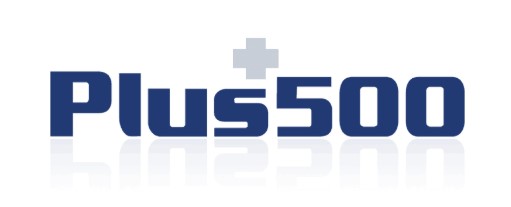
- Very tight spreads
- 70 currency pairs
- Mobile app available
- Little educational material
80.5% of retail investors lose money when trading CFDs with this provider.2. AvaTrade - Spreads From 0.9 Pips
AvaTrade is an international broker that accepts account registrations from over 100 countries, including the Philippines. This forex broker is heavily regulated and holds licenses in several jurisdictions, Ireland, South Africa, Japan, and Canada.
There are over 50 forex pairs to trade on this platform, and the spreads are very competitive, starting from just 0.9 pips when trading GBP/USD. Another notable aspect of AvaTrade is its very large leverage limits - up to 1:400 for traders not located in Europe.
AvaTrade also stands out due to the fact that it offers forex options trading as well as CFDs. This broker supports both MT4 and MT5, meaning you'll have access to a huge range of advanced tools, trading bots and forex EAs. You can also trade currencies on the move va the AvaTrade mobile app.
You can trial AvaTrade courtesy of a demo account, or jump in and make a a minimum deposit of $100 (about 5,009 PHP). The platform accepts Philippines debit and credit cards, but unfortunately it doesn't accept e-wallets.
- Currency Pairs: 55 (42 for options trading)
- Demo Account: Yes
- Trade Commissions: No
- Research Tools: Advanced charts, MetaTrader 4
- Minimum Deposit: $100 (5009 peso)
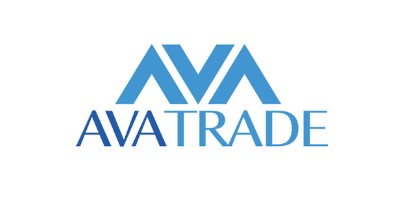
- Both MT4 and MT5 supported
- Offers options trading
- Spreads from just 0.9 pips
- Doesn't accept e-wallets
There is no guarantee you will money with this provider.3. Forex.com - More Than 80 Currency Pairs
Forex.com is a specialist forex broker and offers the more currency pairs than every other broker on this list, with over 80 available to trade.
One of the best things about this platform is that you can choose from multiple account types, so you can pick the one that best suits you. For example, there is an advanced account that allows you to trade major pairs from just 0.2 pips + commission if you trade large volumes. For beginner forex traders, the standard account permits 0% trades, although you will pay a higher spread.
Forex.com supports MT4, and it also offers a range of market analysis resources and advanced charting tools. It's also very impressive when it comes to education, with a range of resources available, including webinars and online trading courses.
The minimum deposit is lower at Forex.com than at most other brokers, standing at just $50, which amounts to about 2,504 PHP. Based in the US, Forex.com is regulated by FCM, RFED, CFTC, and the NFA, which means it's a safe and trustworthy platform.
- Currency Pairs: 80+
- Demo Account: Yes
- Trade Commissions: Dependent on account type
- Research Tools: MT4
- Minimum Deposit: $50 (2504 peso)
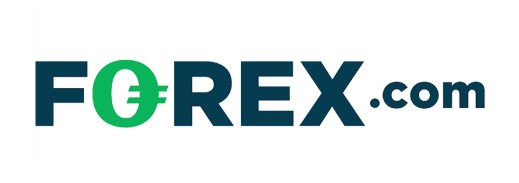
- More than 80 forex pairs
- Multiple account types
- Strong educational resources
- $40 wire withdrawal fee
There is no guarantee you will money with this provider.4. IG - Forex Broker Supporting 17,000+ Assets
Established all the way back in 1974, IG is one of the most trusted brokers in the space. This platform has more than 178,000 users and offers a huge range of more than 17,000 assets, including crypto, stocks, commodities and forex.
There are 80 forex pairs available to trade as CFDs on IG. The platform offers leverage of up to 1:30, and it also offers some of the most competitive spreads around. Forex spreads start at just 0.6 pips, and there's no commission or banking fees either.
There are several trading platforms to choose from when you use IG, including MT4, ProRealTime, or with IG's award-winning proprietary in-house software. You can choose to trade on desktop or mobile, and each platform comes with a range of useful features and trading tools.
IG does have a somewhat high minimum deposit requirement of £250, which equates to about 15,719 PHP. You can make this via an array of different payment methods, including a debit/credit card, bank transfer and PayPal.
- Currency Pairs: 80
- Demo Account: Yes
- Trade Commissions: No
- Research Tools: Advanced charts, MetaTrader 4, ProRealTime
- Minimum Deposit: £250 (15,719 peso)
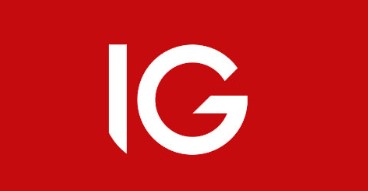
- 80 forex pairs
- Spreads from just 0.6 pips
- 0% commission
- 1% deposit fee on Visa cards
There is no guarantee you will money with this provider.Step 2: Learn How the Forex Market Works in the Philippines
Before you put your money on the line, it’s important to have an understanding of how forex trading in the Philippines works and the associated risks. Here’s what you need to know.
What is Forex Trading?
In a nutshell, forex trading is the exchange of one currency into another with a view to making a profit. The forex market is a decentralized over the counter (OTC) market for exchanging fiat national currencies against each other, such as the US dollar, the Euro, and the Great British Pound.
The forex market works pretty much like any other market, but it’s important for beginners to understand the dynamic of the market and the way currency exchange works. As of 2019, the forex market is the largest and most liquid financial market in the world with an average daily volume of $6.6 trillion.
How does Forex Trading work?
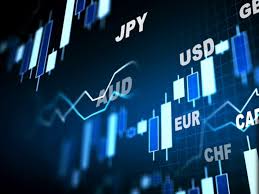 The forex market is run by the interbank market, which is the arena of currency market exchange where banks are responsible for the exchange of different currency pairs. Because the forex market if fully decentralized, it is open 24 hours a day five days a week in different parts of the world. Currency pairs are primarily classified as major, minor and exotic, with major currency pairs made up of the USD and another currency accounting for at least 80% of the total volume of the forex market.
The forex market is run by the interbank market, which is the arena of currency market exchange where banks are responsible for the exchange of different currency pairs. Because the forex market if fully decentralized, it is open 24 hours a day five days a week in different parts of the world. Currency pairs are primarily classified as major, minor and exotic, with major currency pairs made up of the USD and another currency accounting for at least 80% of the total volume of the forex market.As you already know, when you trade forex you trade one currency against another, hence, you can benefit from changes in the exchange rate between the two currencies. Currency pairs are quoted in pairs such as the EUR/USD, USD/JPY, and USD/PHP. The first currency is known as the base currency and the second currency, also known as the quote currency, represents how much you are willing to pay in order to buy the base currency.
For example, looking at the EUR/USD pair, the EUR is the base currency and the USD is the quote currency. If the current rate is 1.1205, this means that it costs 1.1205 USD to buy one EUR. Currency pairs are quoted in terms of ‘pips’ – the smallest unit of measurement. For example, if the EUR/USD rises from 1.1205 to 1.1206, that would be an increase of one pip.
Another important factor to understand is that forex currency pairs are traded in lots. A standard lot is 100,000 units of the base currency, however, you can also trade micro and mini lots which are in the size of 1000, 10,000 respectively.
How do Filipino Traders Make Money from Forex Trading?
Filipino traders can make money in the forex market by speculating on the price movement of currency pairs. Due to the availability of leverage (margin trading), forex traders can make a high return on a single trade without risking a large amount of money. Once a trader has a positive win rate and an accurate risk-reward ratio, it is possible to make a decent consistent income. Yet, you will have to find the best trading hours, the type of trading style that suits your personality, and get familiar with forex terminology and economic factors the drive the forex market.
What Forex Trading Terminologies Should a Beginner Know?
If you are a beginner in the Philippines that wants to start trading currency pairs, you must get familiarise with basic terms and the jargon of the forex market and financial markets as a whole. Here are some important forex terms that you will encounter during your forex trading journey.
- Spread – Spread is the difference in pips between the bid and ask price. For example, if you get a quote on the EUR/USD of 1.1220/1.12201 then the spread is 0.0001, or 1 pip.
- Margin requirement – In forex trading, a margin requirement is a percentage of the full amount required to open a position.
- Slippage – Slippage occurs when a market order or a stop-loss order is executed at a different price than previously set by the investor in the order. Some brokers offer ‘low slippage’ and therefore would still fill your orders based on the price set on the order, and not the executed price.
- Rate Hike and Rate Cut – Interest rates are extremely crucial to day traders and some would say that the forex market is ruled by interest rates changes. Basically, if there’s a rate hike, the currency will usually appreciate and the opposite. But being alert to central banks’ rate hike and rate cut announcements is not enough, and you should follow the factors that may or may not determine if a central will raise interest rates like CPI, GDP, etc.
- Exotic currency pairs – An exotic currency pair is any Forex pair that does not include the combination of major or minor currency pairs. These pairs usually consist of a major currency alongside a currency of an emerging-market economy such as the Philippine Peso versus the US Dollar, USD/PHP.
- Margin call – A margin call in forex occurs when a trader has no sufficient amount of money to open trades or hold a position. A margin call is, therefore, a risk warning from the broker and that the account needs more funding.
What Currency Pairs can Filipino Forex Traders use?
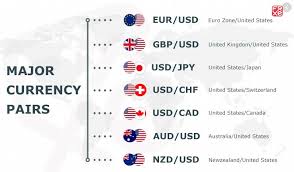 Filipino forex traders can trade all currency pairs that are available on online trading platforms. If you are authorized to open an account with one of the regulated brokers above, then you will be able to trade on any currency pair.
Filipino forex traders can trade all currency pairs that are available on online trading platforms. If you are authorized to open an account with one of the regulated brokers above, then you will be able to trade on any currency pair.The most commonly traded pairs are majors like USD/GBP, but many brokers support minor and exotic currencies, including the Philippine Peso. Since 1993, the Philippine Peso has become a free-floating currency and is offered by a few forex brokers on the market, such as IG.
What is Leverage in Forex Trading?
Leverage in forex essentially involves the borrowing of funds from the brokerage firm in order to increase the trader’s amount of capital. This means you can have a small amount of capital in your account but by using leverage, you can trade with a larger amount in the market.
Some Philippines forex trading platforms offer a high leverage ratio of up to 500:1 and even 1000:1, but it is extremely important that you realize that leverage is a double-edged sword. It has the potential to significantly enlarge your profits but also increases the risk of losing your capital. If you’re a beginner, it is therefore recommended that you use a low leverage ratio of up to 30:1.
What You Need to Do Before Trading Forex
Trading forex can potentially be a great way to make an additional or primary income. But, if you are planning to become a professional trader you must hone your skills and constantly improve your knowledge – something that can take many years. Here are some points every trader should consider before start trading currency pairs:
- Choose a broker and trading platform that matches your needs and trading style
- Understand Economy and the Markets
- Practice your skills and strategy on a demonstration account
- Apply risk-reward ratio
- Focus on 1-3 currency pairs
- Find forex news and market data platform
- Learn technical analysis – how to read and understand charts
- Understand commissions and spreads
- Don’t use a high leverage ratio
Step 3: Learn How to Manage Your Money When Trading Forex
If you want to become a professional trader, then you need to be patient and learn all the time. Many professional trading companies that hire beginner traders allow them to lose funds of the company for a time period of around 6-9 months as a learning curve before they become profitable traders.
As an individual trader, there are a number of things you can do to reduce the risk of losing your capital and manage your funds effectively.
- Decide How Much you Want to Invest
The amount you need to invest depends on your financial status and the returns/losses that seem rational and appropriate to your lifestyle. Otherwise, you might feel like a gambler if the stakes are too high, or feel a lack of motivation if the stakes are too law.
Therefore, the only one who knows what is the right amount to deposit is you. But, as a general guideline, it’s advisable that you start with the minimum deposit requirement, or a bit higher, to ‘test’ the platform, see how trading works for you, and learn the dynamics of the market.
- Start with Small Trades on a Demo Account
A demo trading account is a great way to see which trading platform and broker is the right for you. But more importantly, if you are a beginner then it’s a great way to get familiar with the market, the trading platform, the available financial instruments, the charting package, and the trading tools provided by the broker.
We recommend that you first practice on a demo account, but try to make it as real as possible. It won’t help you if you make unrealistic trades and then move on to a real live trading account. You should use the demo account as a tool to practice your trading skills.
- Learn Forex Trading Strategies
There are tons of forex trading strategies that you can apply. Each strategy can be the right one for different purposes and it might take time until you find a set of trading strategies. For example, many forex traders use a carry trade strategy that involves buying a currency with a high-interest rate and sell the currency with a lower interest rate.
Here are the most common forex trading strategies:
- Swing Trading – Swing trading is a trading technique that focuses on buying and selling financial assets within the timeframe of a few days, usually 2-5 trading days.
- Day Trading – Day trading is the act of trading financial instruments in short timeframes with an important rule of closing all trades by the end of the day.
- Scalping – Scalping is a trading style where traders typically make small profits in an extremely short period of time (seconds, and minutes).
Step 4: Create a Philippines Forex Trading Account
Know you’ve chosen a broker and learned the basics, the next step is to create a Philippines forex trading account and place your first trade.
Choose from the list of brokers outlined above, submit your KYC information, and make an FX trade.
Pros and Cons of Forex Trading in the Philippines
Pros:
- Forex is the most liquid market in the world, with an average volume of 6.6 trillion
- Decentralized market
- A huge variety of forex pairs
- Great market for day trading strategies
- Leverage/margin requirement is available
- Brokers enable you to buy and short-sell currency pairs
Cons:
- You must follow the news and economic data
- The forex market is very volatile
- High leverage also means high risk
Conclusion
The forex market is a highly volatile and highly liquid market, which makes it an attractive prospect to many traders. However, before you begin forex trading in the Philippines, it’s vital you understand the market, develop a forex trading strategy and choose a top broker.
References
To ensure we bring you the most reliable and accurate information possible, our writers use primary sources to support their content. These include studies, government resources and commentary from industry experts.
- Bloomberg. “Global Currency Trading Surges to $6.6 Trillion-a-Day Market”. https://www.bloomberg.com/news/articles/2019-09-16/global-currency-trading-surges-to-6-6-trillion-a-day-market. Accessed June 17, 2020.
FAQs
Is forex trading legal in the Philippines?
PThe legal status of Philippines forex trading is somewhat of a grey area. However, provided you choose a regulated overseas broker then you can safely trade forex in the Philippines.
Which is the best forex broker for beginners in the Philippines?
All things considered, Plus500 is one of the best choices for beginners.
How can I make money by trading forex?
In forex trading, you make profits either by selling currencies at a price higher than your buying price, or by correctly speculating on the price of currencies going down.
Should a beginner trade with leverage?
Leverage is a double-edged sword. It can either bring high rewards or lead to a great loss of capital. If you do use leverage, make sure you only risk what you can afford to lose.

Nica
Nica
View all posts by NicaNica specializes in financial technology and cryptocurrency. At her young age, she was already able to work with a Y Combinator-backed startup and another startup founded by Harvard graduates.
Latest News
WARNING: The content on this site should not be considered investment advice and we are not authorised to provide investment advice. Nothing on this website is an endorsement or recommendation of a particular trading strategy or investment decision. The information on this website is general in nature, so you must consider the information in light of your objectives, financial situation and needs. Investing is speculative. When investing your capital is at risk. This site is not intended for use in jurisdictions in which the trading or investments described are prohibited and should only be used by such persons and in such ways as are legally permitted. Your investment may not qualify for investor protection in your country or state of residence, so please conduct your own due diligence or obtain advice where necessary. This website is free for you to use but we may receive a commission from the companies we feature on this site.
Copyright © 2022 | Learnbonds.com
We use cookies to ensure that we give you the best experience on our website. If you continue to use this site we will assume that you are happy with it.Scroll Up

